Span 32 cm / 12.5 in
Weight 36 g / 1.27 oz ready to fly
The concept:
- easy to build
- twinboom layout
- few parts
- good flight characteristics
- exclusive colouring
- RPU 20
Note: there are two versions of the Still life in purple. One is a glider (1035), the other powered by RPU (here). The RPU model has been tested with brown and black rubber, with airscrews sizes 10 cm / 4 in and 15 cm / 6 in diameter. With black rubber and big prop torque is considerable and model swings from left to right. So better use less powerful brown rubber and small airscrew.



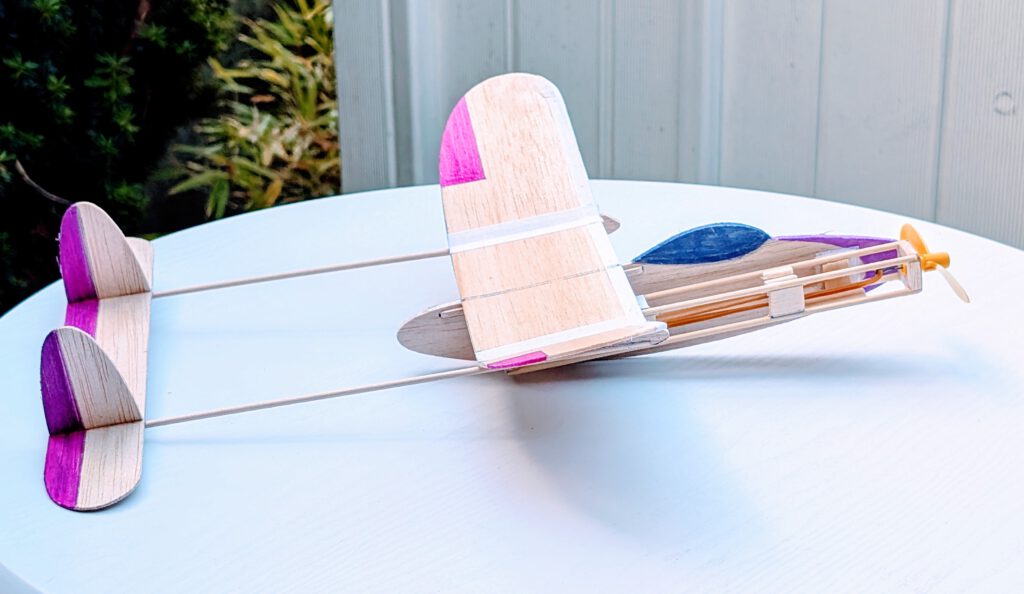
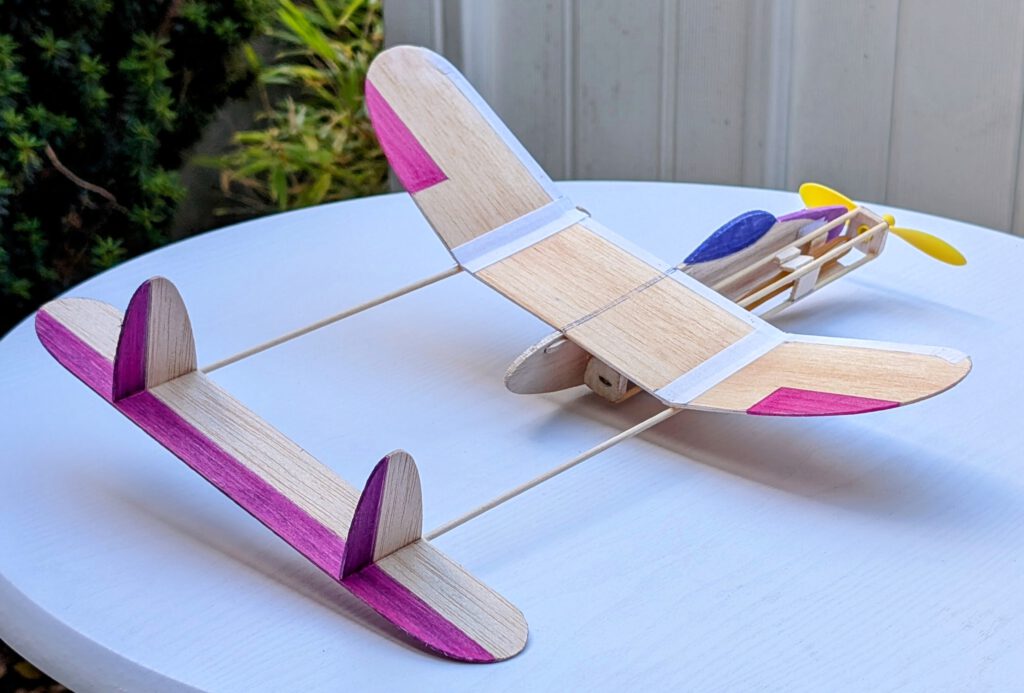
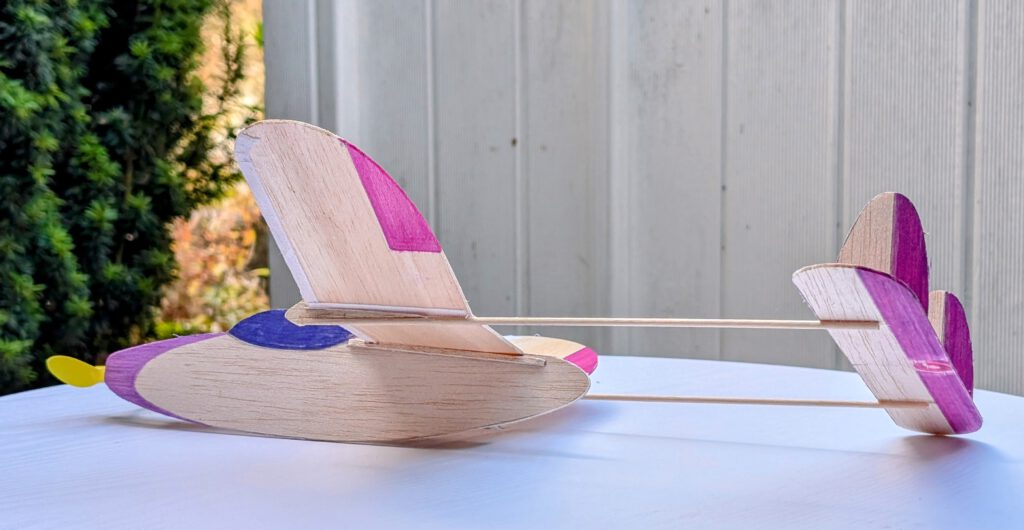
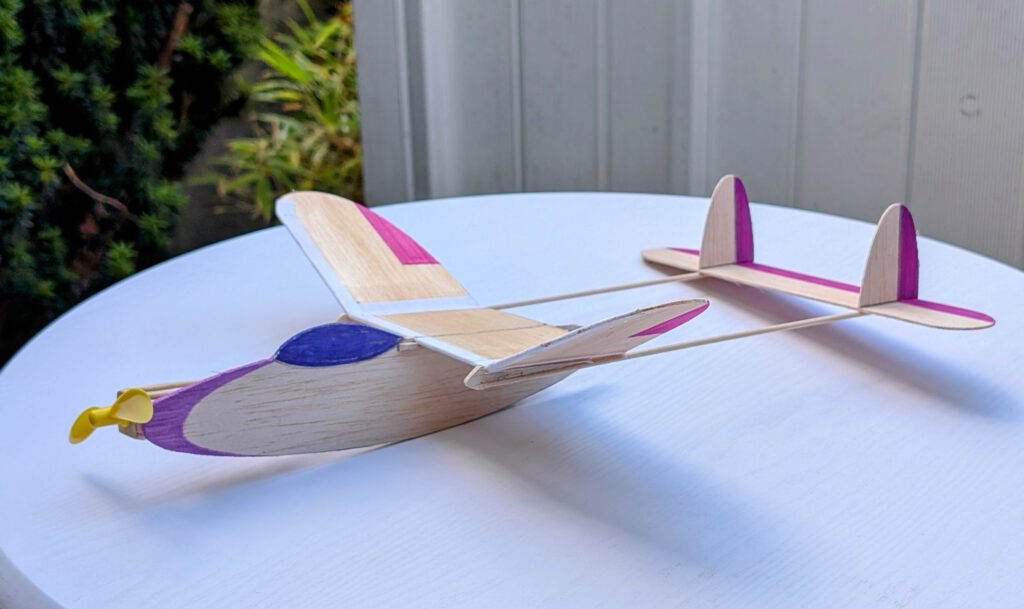
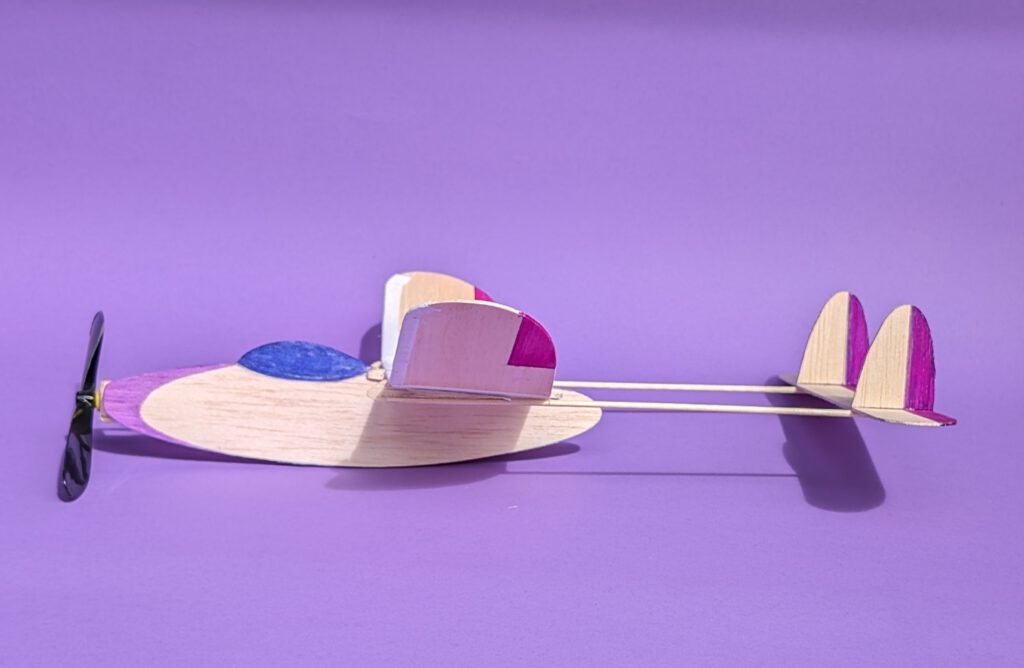
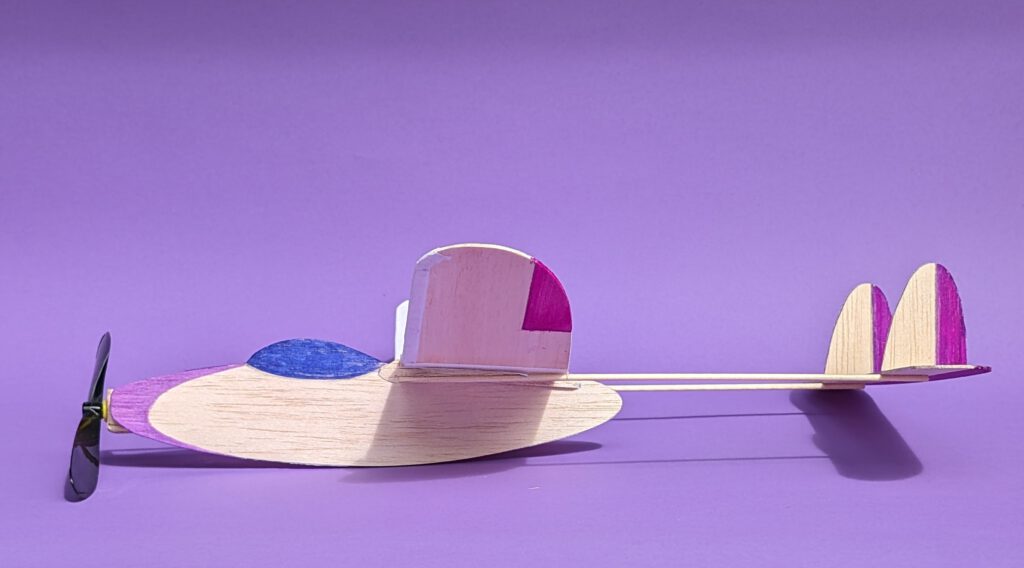
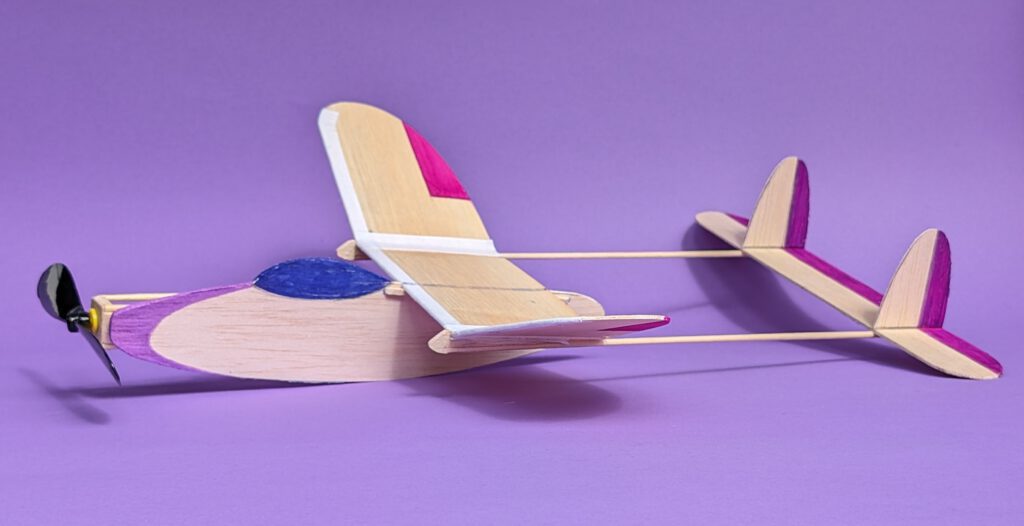
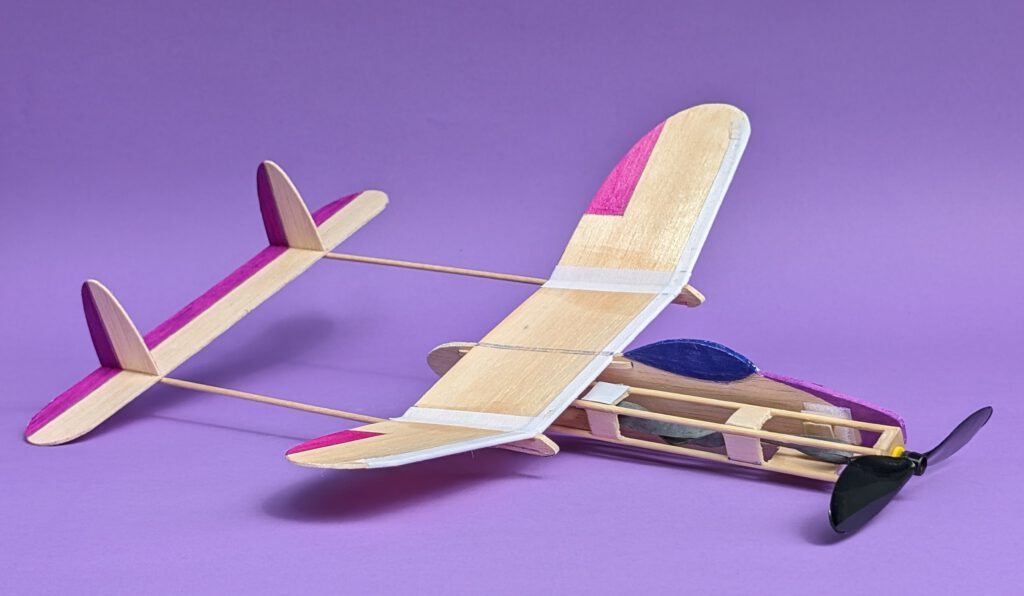
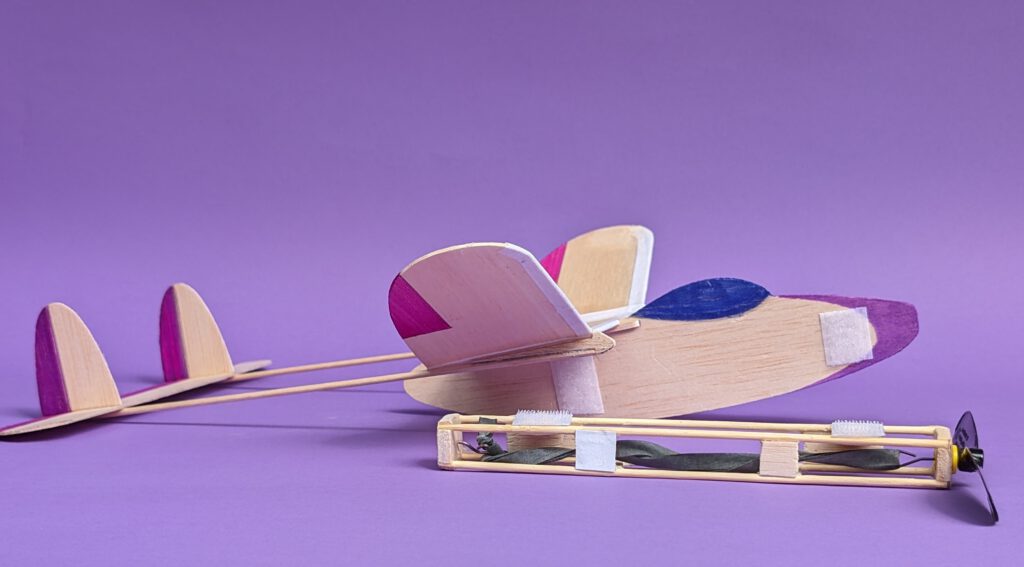
What is RPU?
RPU stands for rubber power unit.
This is a device designed for the modelbuilder who likes to fly many models with one only powerunit. Main material of the RPU comes from the grocery store around the corner: four barbecue skewer chopsticks. Add to them scratch balsa, a hook made from piano wire, some black rubber and a commercial plastic airscrew. That’s all.
The unit is attachable through two pieces of Velcro tape and can thus be used for example first on a little Spitfire five minutes later on a Mitsubishi Zero and ten minutes later on a Macchi Folgore of the same configuration. You build only one RPU and use it on as many modelplanes as you wish.
Models with RPU use the same asymmetrical principle as is known from No-cal models. From the one side they look handsome as from the other the power unit disturbs the harmonic view considerably.
Generally there is no great difference between the flight performances of a balsa sheet profile model with built-in rubber motor and a model flying on a RPU.
Why not try both principles? Among the plans range of beginner.zone you will find models of both categories. Sit down, build, fly, compare!
I developed and tested three different types of RPUs.
- The one for small models of 30 cm / 11.8 in to 40 cm / 15.75 in wingspan is the RPU 20 (lenghth 20 cm / 7.9 in).
- The one for medium sized models with a span of 40 cm / 15.75 in to 60 cm / 23.6 in is the RPU 30 (length 30 cm / 11.8 in).
- The one for larger models of up to 80 cm / 31.5 in wingspan is the RPU 40 (length 40 cm / 15.75 in).
- The RPU 40 is made from slightly different material. Instead of the skewer chopsticks it uses two strips of bamboo wooden sticks (400 x 9 x 3 mm). The rest is identical.
Building the balsa sheet model Still life in purple RPU.
Materials
Fuselage gondola: B 2 or 2.5; wing: B 1 or 1.5; wing support: B strips 3 x 2; booms: skewer chopsticks diameter 3; boom-wing connection part: B 3; horizontal stabilizer: hard B 1; fins: hard B 1; linen band width 10 mm / ½ in; Velcro tape with adhesive backside; ballast: steel or lead.
Assembly
Cut out balsa parts in accordance to plan (photo). Sand well. Transfer outlines of cockpit, rudders, elevators, etc. from paper to wood with pen. If coloring is desired do it right now.
Fuselage gondola:
Fix fuselage gondola with needles on building board. Cement wing support strip in its place and let dry. Hold with needles.
Take gondola from building board and cement wing support on the other side. Let dry.
Wing:
Wing consists of a center section and one right and one left wing outer section. Reinforce all wing leading edges with linen band as can be seen on photos. Let dry. Fix wing center section on building board with needles. Underlay left and right wing outer section tips in accordance to required dihedral. Join all three parts with glue and cover wing joint areas with linen band (photos). Let dry.
Booms:
Fix skewer chopsticks on building board with needles. Cement boom-wing connection part to them as can be seen on photo. Visual check symmetry from all sides. Let dry.
Final Assembly:
Put booms on your plan, fix them with needles. Take for this step extra care. Both booms must be absolutely parallel and perfectly aligned. Boom-wing connection part must sit on top of skewer chopsticks. Doublecheck visually from all sides. First cement wing on boom-wing connection part using needles just like shown on photo. Again check visually symmetry. Let dry.
Repeat procedure with horizontal stabilizer. Check well symmetry! When dry add both fins (photo). Fins must stand upright in a 90° angle. Use drawing triangle to assure precision.
Cement wing-boom assembly to fuselage gondola. Use needles to hold in place and check visually symmetry from all sides. Let dry.
Stick two pieces of Velcro according to your RPU on right fuselage gondola side.
For balancing your model properly install RPU and start testgliding over tall grass. Add ballast according to your test results. Note given position of CG on plan.
Remember correct center of gravity (CG) is essential for successful flights.
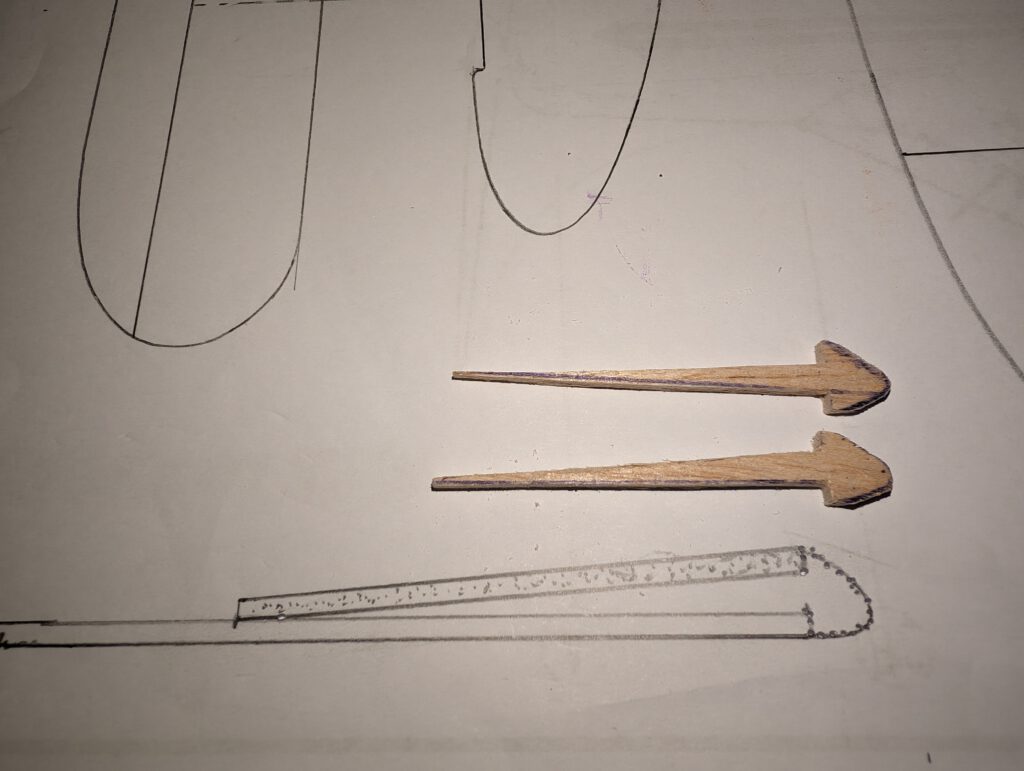
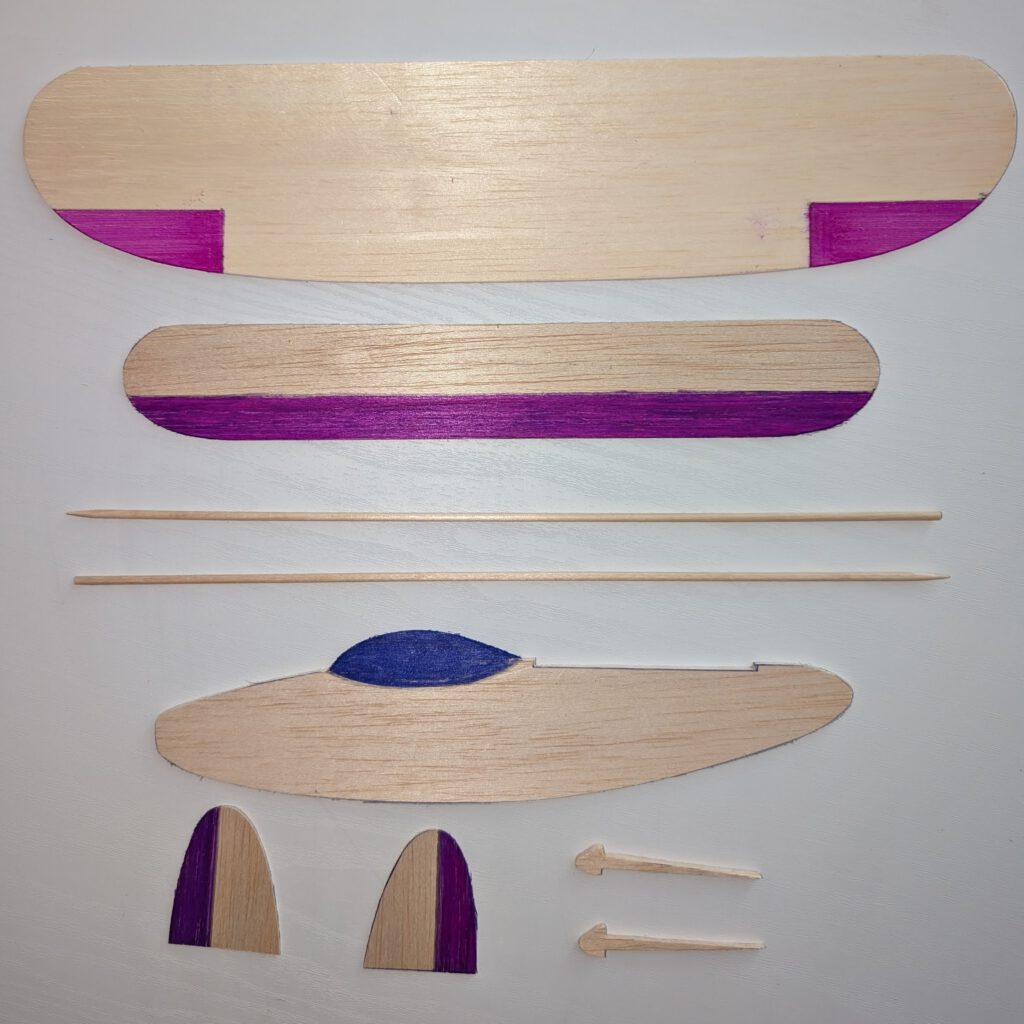
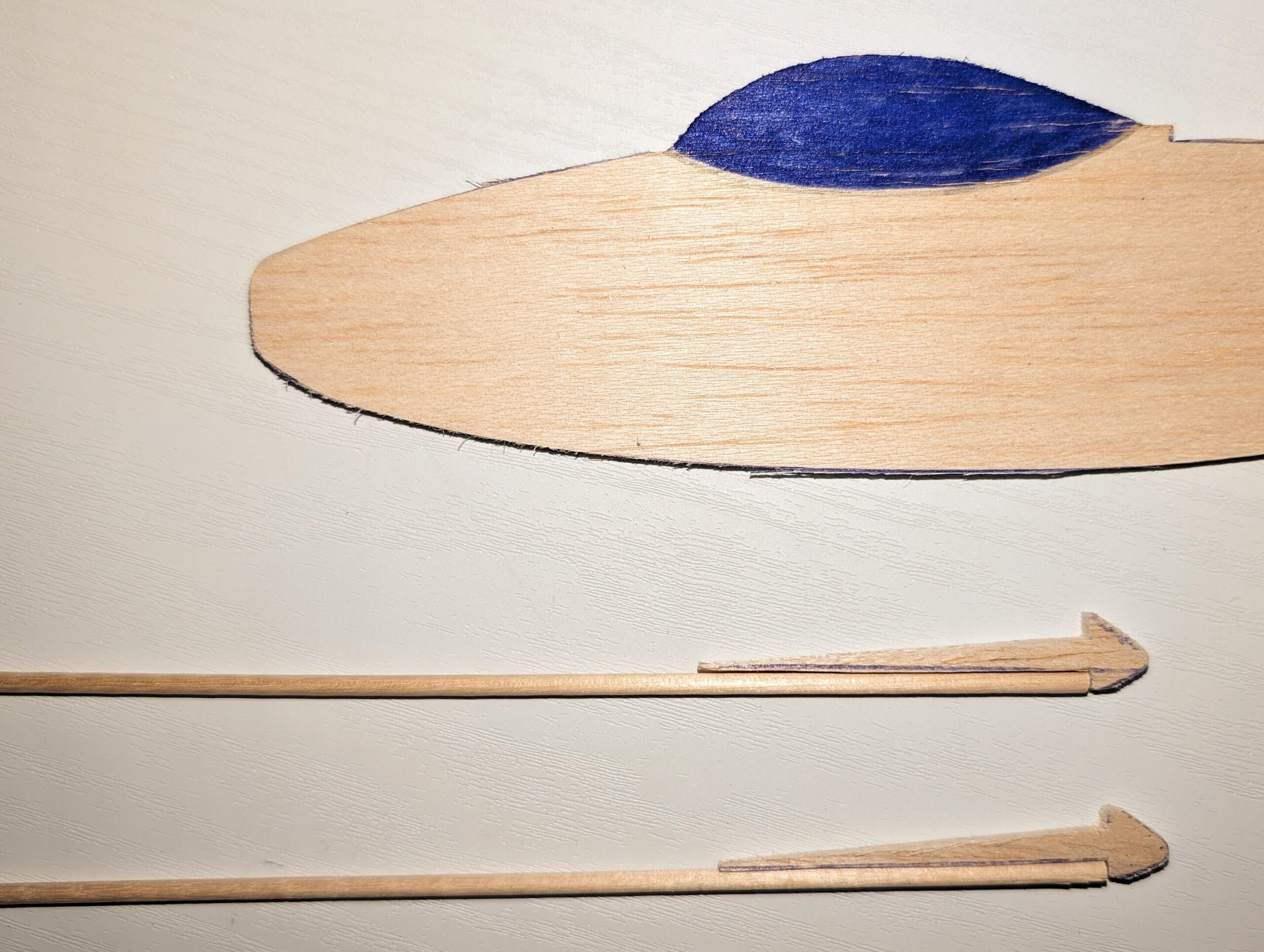

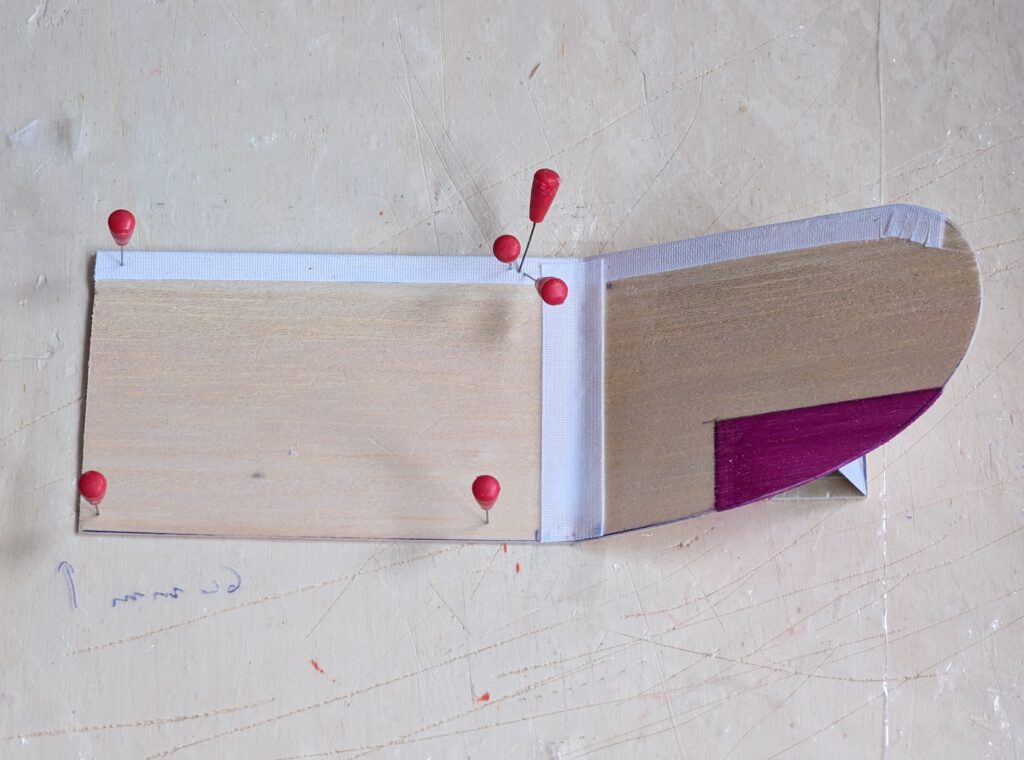
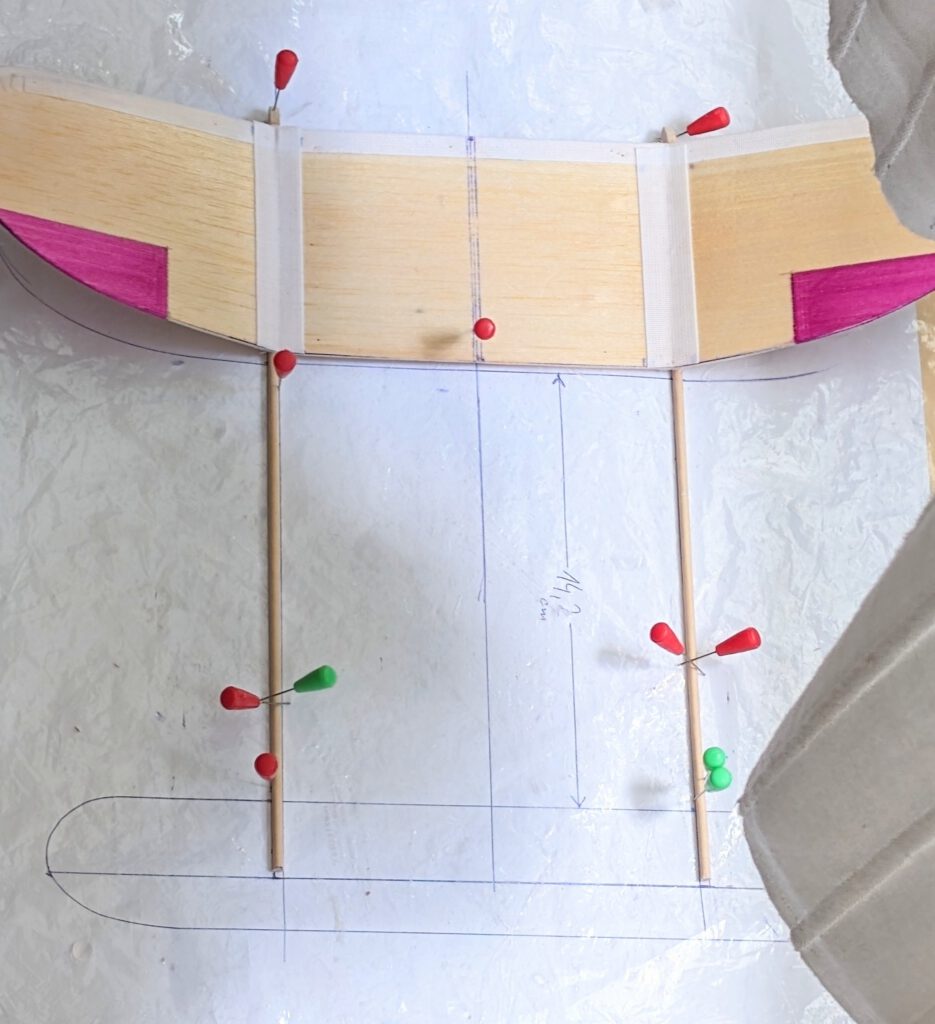
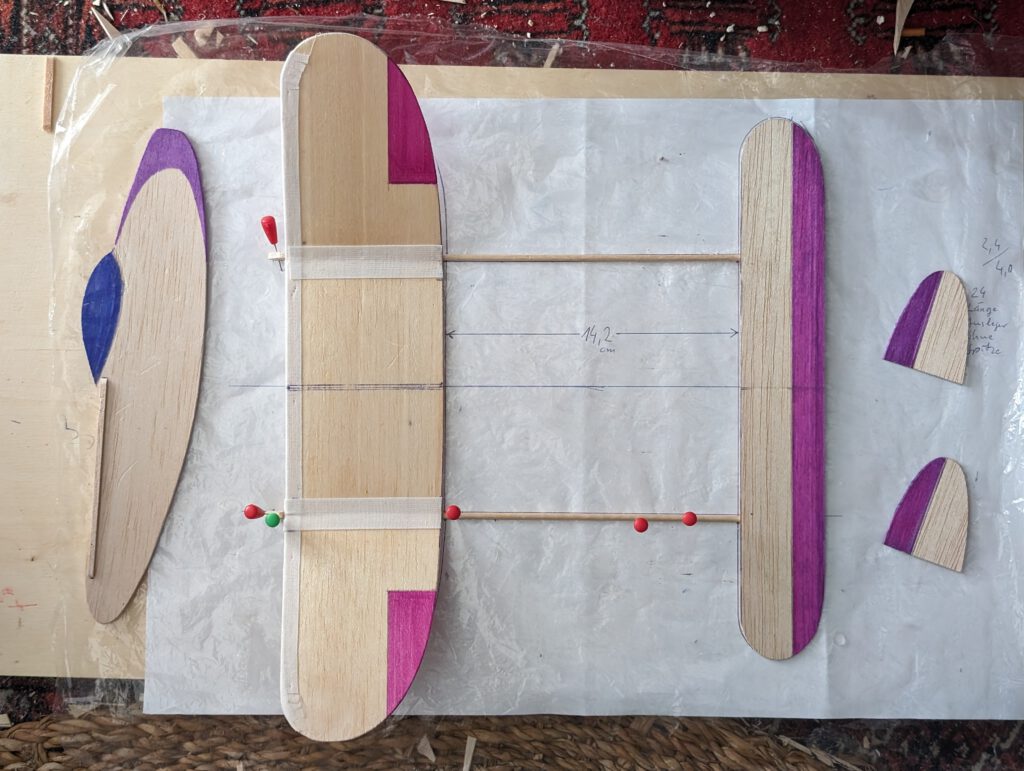
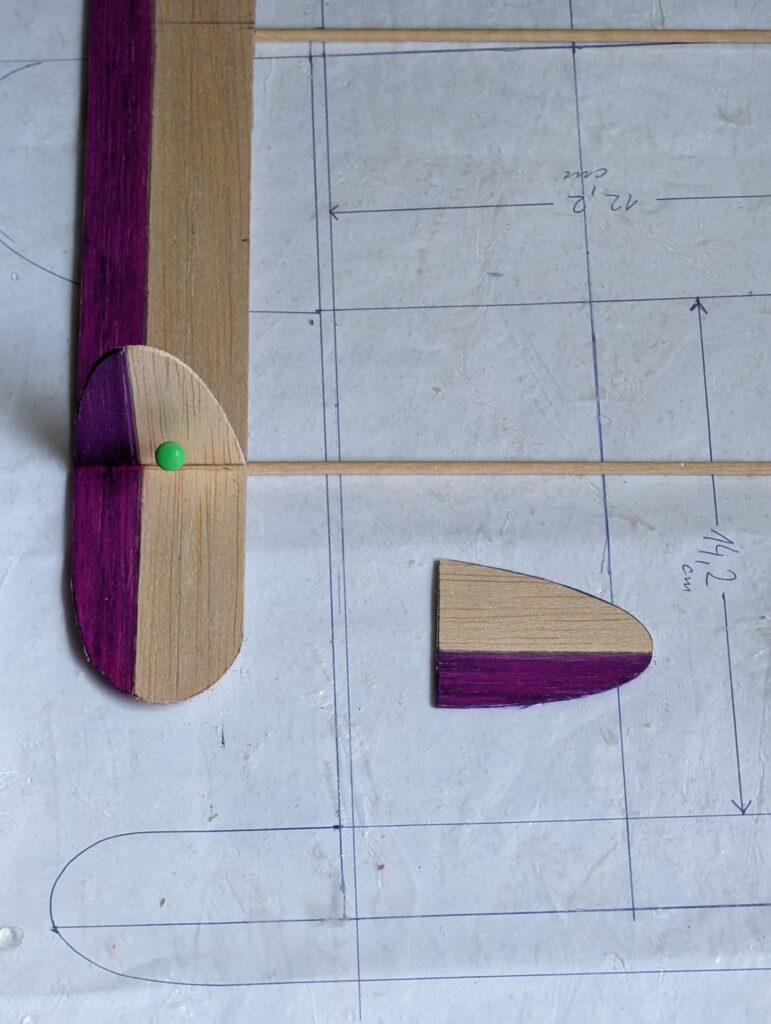
Keni shumë fluturime të këndshme! (שיהיו הרבה טיסות נעימות!)

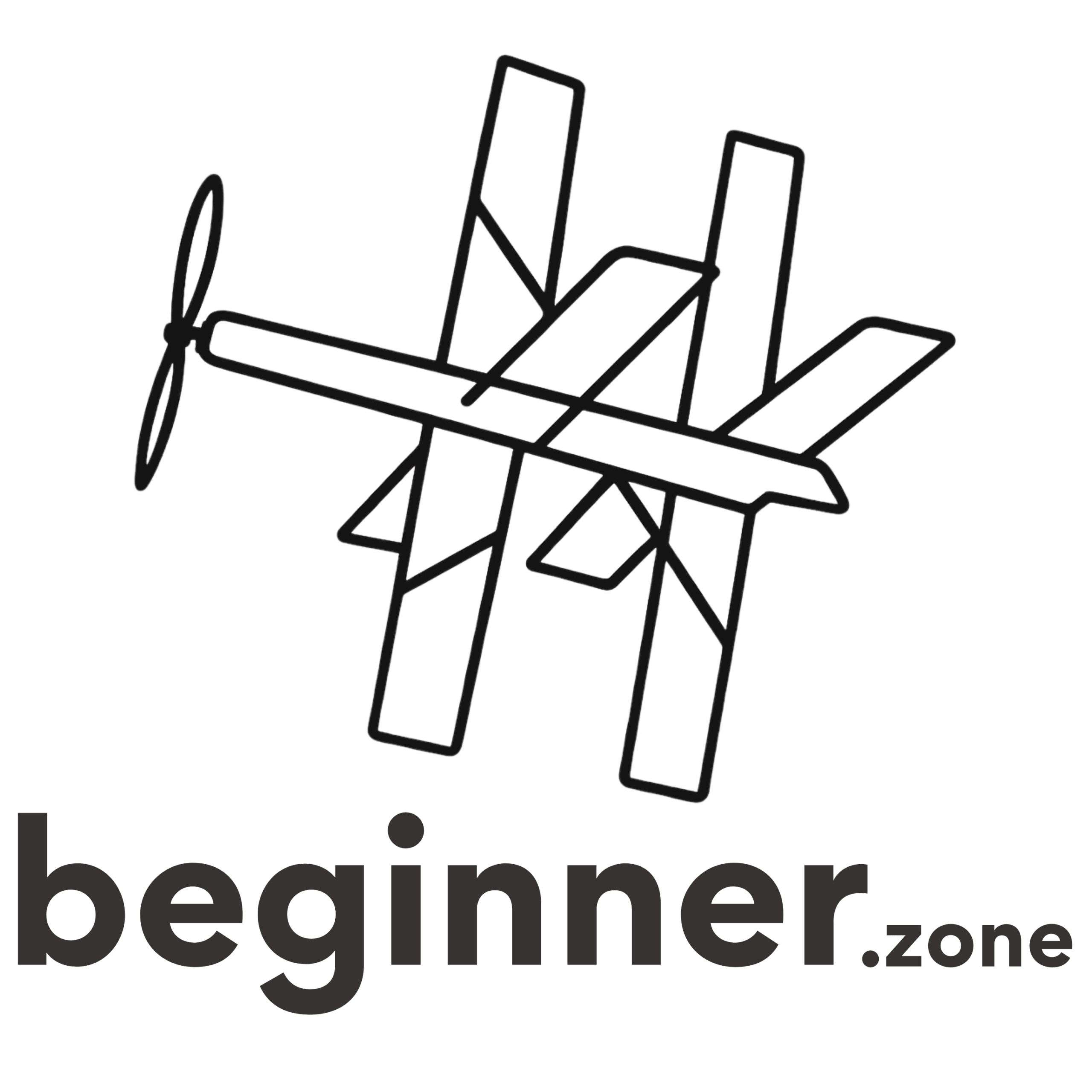
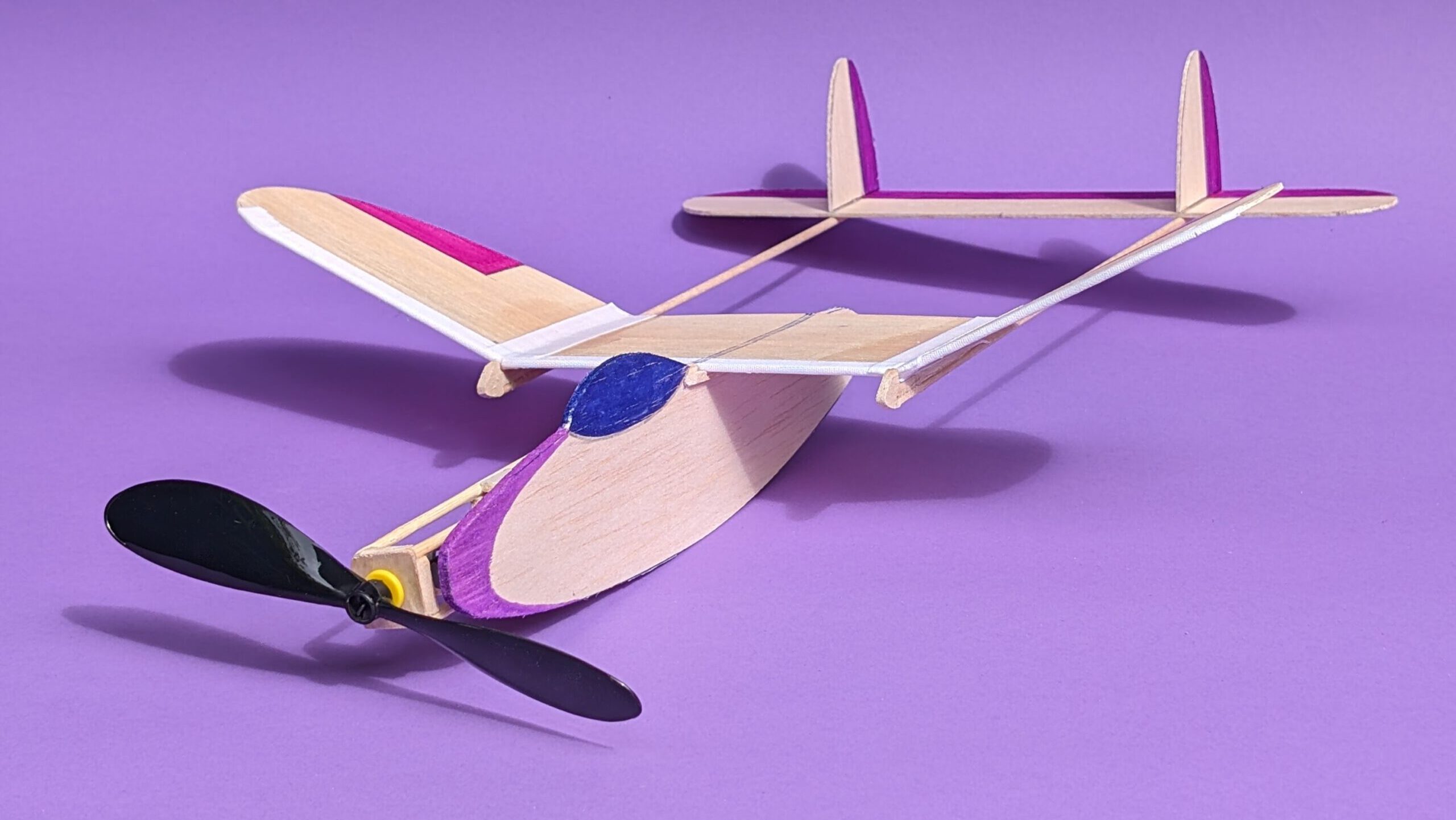
Leave a Reply